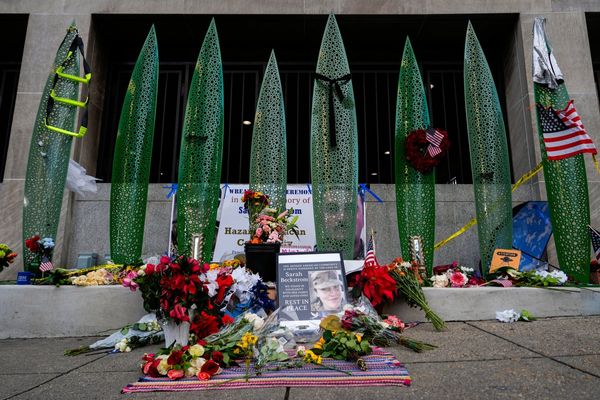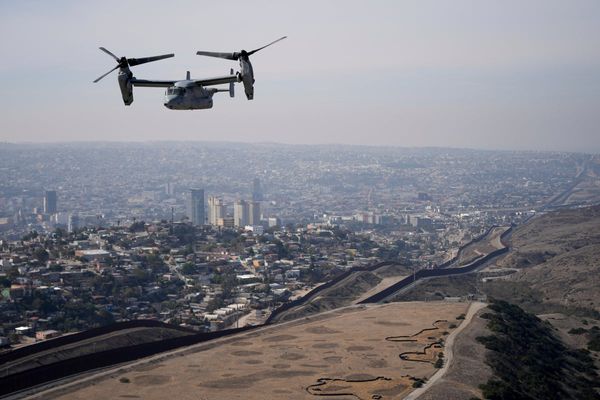
From the gamekeepers bearing her coffin out of Balmoral Castle to the sight of it sinking slowly through St George’s chapel floor, almost every step of Queen Elizabeth II’s final journey was exquisitely choreographed and conveyed to the world.
Over decades, senior palace officials had fine-tuned London Bridge, the funeral plan, Operation Unicorn, in the event she died in Scotland, and Operation Spring Tide, the King’s programme. The Queen was, those who knew her agree, a “perfectionist”.
The Queen Mother’s funeral 20 years ago had provided, in some ways, a rehearsal of the ceremonial – although this would be on a grander scale. On this occasion, too, there would be a parallel narrative. This was not just the funeral of a queen but also the accession of a new king, plans that were again long in the making.
Yet, feeding the media’s insatiable appetite for fresh content over 11 days is a daunting task. At this, the palace has proven to be expert. Any void would be unwelcome, creating space for mischievous reporting. So, day after day, new information and new photo opportunities were offered. It ensured the momentum was maintained right up until the ceremonial spectacular of the state funeral and committal service.
“It was an extraordinary moment history was waiting for. Everything was controlled. And they took full advantage of every moment. They just kept on surprising people,” said Mark Borkowski, a leading PR. “They set the news agenda throughout the mourning period. They set the narrative. And they provided the media moments.”
There were set-pieces and precedent. The very poignant vigil of the princes, when members of the royal family stood guard during the lying in state, first took place around George V’s coffin in 1936. The Queen Mother was the first consort accorded this honour, in 2002.
Because Queen Elizabeth II died at Balmoral, there were three vigils: as her coffin lay at rest in St Giles’ Cathedral, Edinburgh; at her lying in state inside Westminster Hall; and, finally, again at Westminster Hall, this time with her eight grandchildren. Each time, the image was guaranteed to be on the front pages of newspapers.
The Princess Royal’s emotional six-hour journey – one she later described as an “honour and privilege” and “humbling and uplifting” – following the hearse as it made its way by road through the scenic highlands from Balmoral to Edinburgh was another strand delicately woven into the narrative. The rich images of the ceremonial procession in Scotland and the lying at rest in Edinburgh were a bonus for the media, and a welcome advertisement for Scottish tourism.
Tributes from the royal family were released in strict order of precedence and seniority, and never on the same day. The King’s first, in his King’s address, then the Prince of Wales and the Duke of Sussex, with the Duke of York’s at the end, 10 days after his mother’s death.
The arrival of the coffin by procession to Westminster Hall and, five days later, the grand ceremonials of the state funeral at Westminster Abbey and committal service at St George’s chapel drew heavily on previous royal funerals. Last-minute additions to the plans included the inclusion of NHS workers at the funeral, to reflect the travails the country has undergone through the Covid pandemic.
As much detailed thought had gone into the King’s programme. The televising of the accession council for the first time, the colourful proclamations read out across the nation, his visits to Edinburgh, Cardiff and Hillsborough all cemented his accession.
“They were establishing a narrative and a personality, and subtly, they were establishing what the new administration looks like, It was a lot different to the Queen’s in many ways,” Borkowski said. “It felt like spontaneity. They thought: how do we get Charles’s character across? We get him out there, walking to the crowds when he first arrives at Buckingham Palace. All that touchy feely stuff the Queen certainly wouldn’t have done in a million years. So, actually, it shows very subtly there is a point of difference.”
There was no escaping that the funeral took place against a backdrop of familial controversy. The question over when and where Prince Andrew and Prince Harry would be permitted to wear uniform was one. A surprise Windsor walkabout by William and Kate and Harry and Meghan created acres of coverage, and sought to counter speculation over the brothers’ strained relationships.
But, such was the avalanche of other information, the palace ensured that the focus did not divert away from the Queen herself.
“There was nothing modern about the way they went about it. It was tried and trusted and well oiled method of using the media. And the media were very grateful for it. These things don’t last, though,” said Borkowski. “You can never sit back. A few years ago, they would have had some time to think and gather themselves. But we have moved on. “
With the plans for the coronation of Charles III, reportedly a much less grand and expensive affair that that of his mother, now in full swing, the palace has no time to relax and congratulate itself on a huge operation, executed with perfection.







